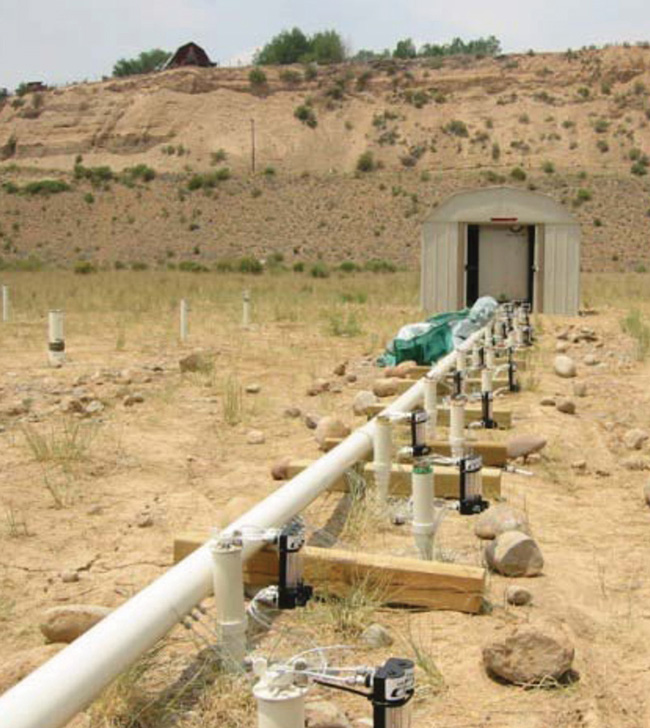Understanding How Uranium Changes in Subsurface Environments
Bacterial biomass found to have an impact.

The Science
The Department of Energy has a long-term responsibility to contain uranium leaked into the environment at mining and processing sites. Uranium has a complex chemistry that determines whether it is immobilized or moves out of a contaminated area, potentially into water supplies.
The Impact
New research on the transformation of uranium (VI) to uranium (IV)—the most common oxidation states of the element—discovered that bacterial biomass in the ground impacts this transition.
Summary
Studies were carried out at the Rifle (Colorado) Integrated Field Research Challenge site to determine the behavior of uranium (VI) exposed to natural conditions and the underlying controlling biological and chemical mechanisms. The experiments, conducted by scientists from the SLAC National Accelerator Laboratory and Lawrence Berkeley National Laboratory, showed that uranium (IV) unexpectedly was present both as a monomeric, biomass-associated uranium (IV) species and, to a much lesser extent, as nanoparticles of uraninite (UO2). Researchers attribute the presence of the former to the binding of uranium (IV) to phosphate groups in biomass following the chemical transformation of uranium (VI) to uranium (IV) by reaction with iron sulfides or bacterial enzymes. Since a substantial portion of the uranium is found in this form, models of uranium transport in contaminated subsurface environments need to recognize the existence of multiple pathways for reduction of uranium (VI), including the biological factors identified in this research.
Contact
J.R. Bargar
Chemistry and Catalysis Division
Stanford Synchrotron Radiation Lightsource,
SLAC National Accelerator Laboratory,
Menlo Park, CA 94025
bargar@slac.stanford.edu
Funding
Research was funded by the DOE Office of Science Biological and Environmental Research (BER) program, the U.S. Geological Survey, Swiss National Science Foundation, and Marie Curie Program. The Stanford Synchrotron Radiation Lightsource Structural Molecular Biology Program is supported by BER and the National Institutes of Health (NIH)–National Institute of General Medical Sciences.
Publications
Bargar, J. et al. “Uranium redox transition pathways in acetate-amended sediments.” Proc. Natl. Acad. Sci. USA 110, 4506–4511 (2013). [DOI: 10.1073/pnas.1219198110].
Highlight Categories
Program: BES , SUF , BER , CESD
Performer: University , DOE Laboratory , SC User Facilities , BES User Facilities , SSRL



